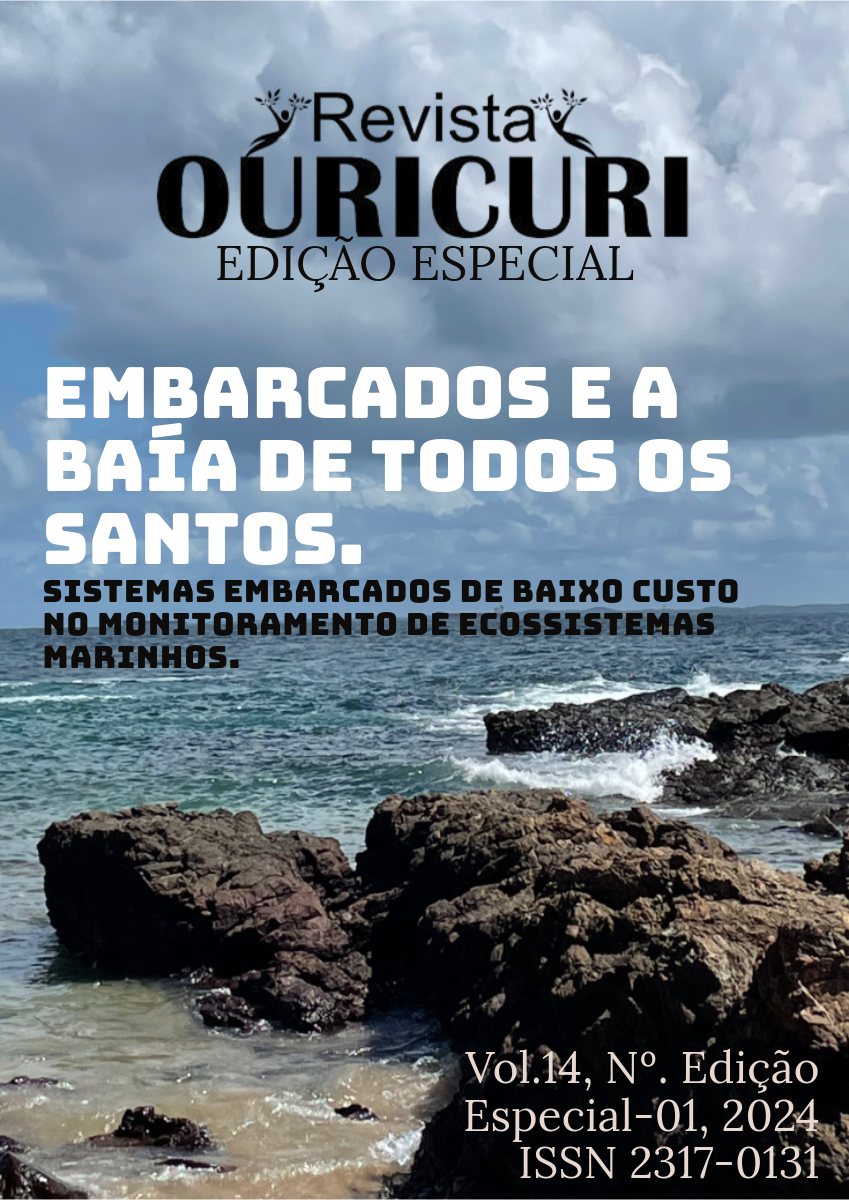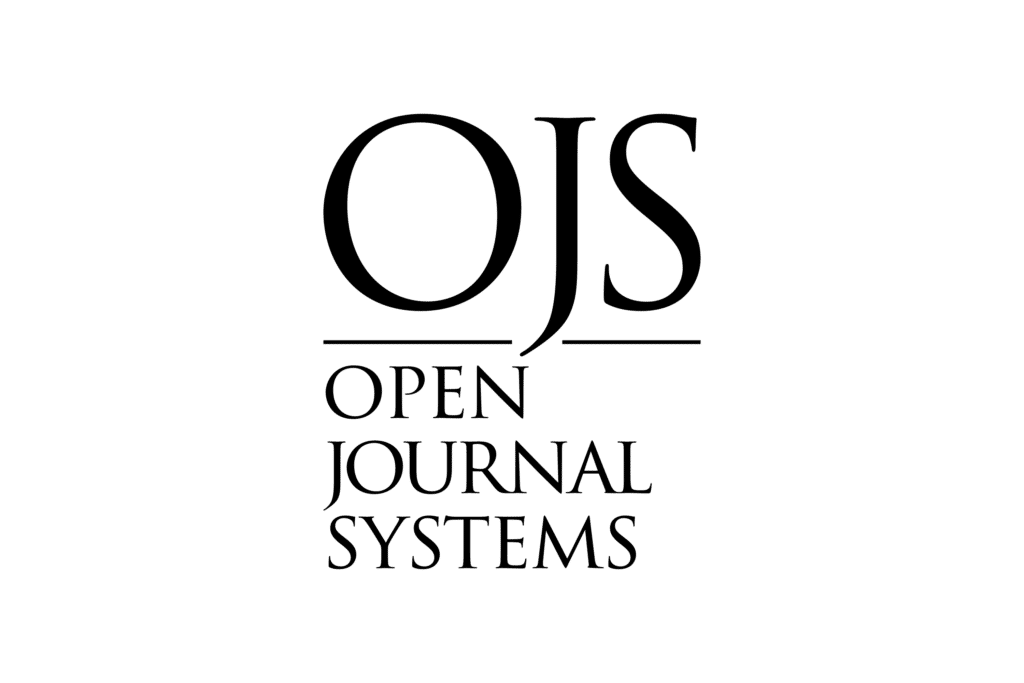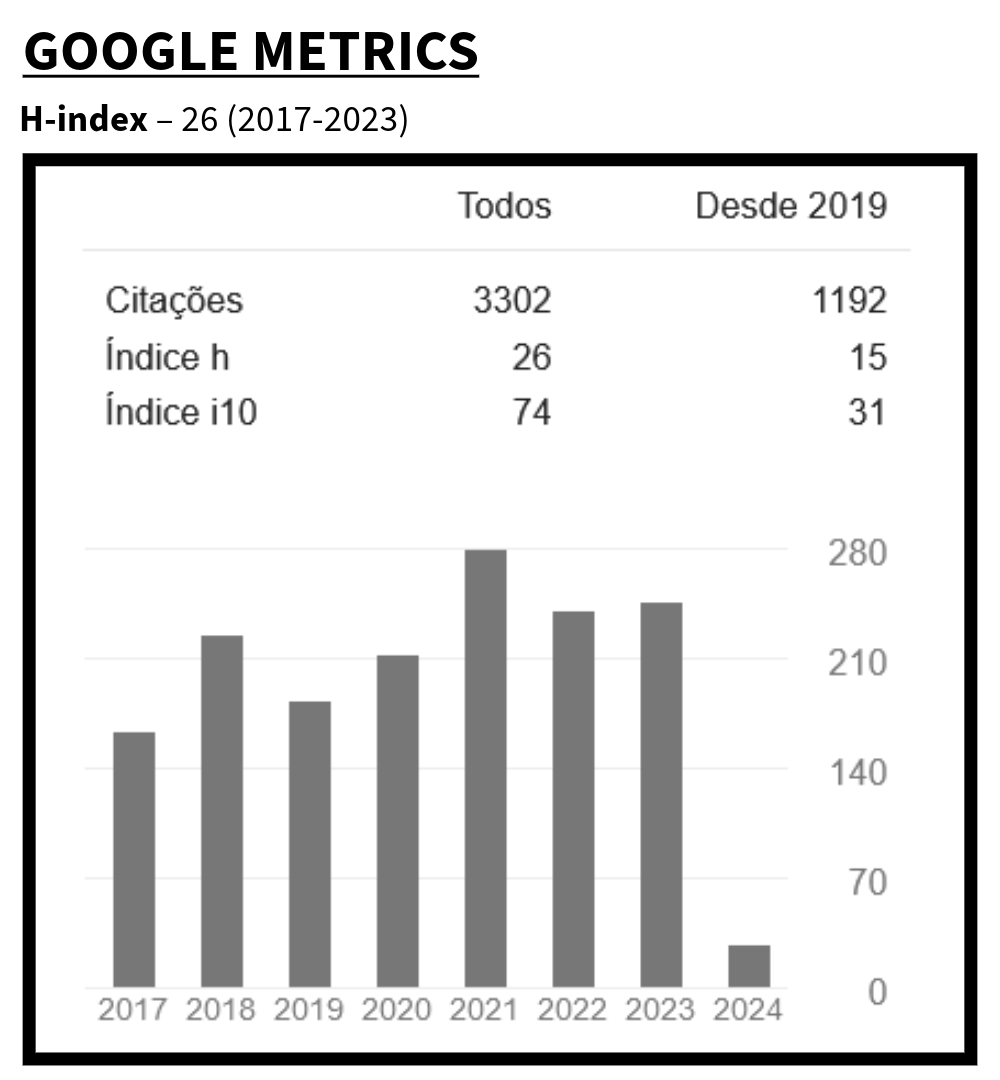Practical applications of embedded systems for marine ecosystem conservation
DOI:
https://doi.org/10.59360/ouricuri.vol14.iedicao-especial-01.a22036Keywords:
Marine Bioindicators, Environmental Monitoring, Sustainability, Remote Sensing, ArduinoAbstract
Embedded systems provide a comprehensive range of information that contributes to the observation, preservation, and management of marine environments. The integration of these technologies with sensing, data collection, and analysis methods empowers researchers, conservationists, and environmental managers by enhancing their understanding of safeguarding marine ecosystems more efficiently. Moreover, by delivering accurate, real-time information on ecosystem status, embedded systems enable more efficient and adaptive management of natural resources. This facilitates the implementation of targeted, evidence-based conservation strategies, contributing to the protection of marine biodiversity, the maintenance of ocean health, and the promotion of environmental sustainability. This article explores the use of embedded systems as tools for marine ecosystem conservation, focusing on environmental monitoring and sustainable resource management. Based on a literature review, it investigates the potential of embedded systems as conservation tools in marine ecosystems. Scientific articles and project analyses focused on environmental monitoring and sustainable marine resource management were reviewed. The results indicate that embedded systems are a promising tool for environmental conservation. Their capacity for real-time data collection and analysis facilitates rapid responses to critical events and supports evidence-based preservation strategies. Thus, these technologies emerge as indispensable for the sustainability of marine ecosystems, enabling the identification of changes and providing a foundation for adaptive conservation strategies.
Downloads
References
Arias, Ana Rosa et al. Utilização de bioindicadores na avaliação de impacto e no monitoramento da contaminação de rios e córregos por agrotóxicos. Ciência e Saúde Coletiva, [s. l.], p. 61-72, 2007.
Brown, A. C. & Mclachlan, A. Ecology of Sandy Shores. Amsterdam: Elsevier, 327p. 1990.
CONFERÊNCIA DAS NAÇÕES UNIDAS SOBRE O DIREITO DO MAR,3., New York, abr. 1982. Declaração do Embaixador Carlos Calero Rodrigues, Chefe da Delegação do Brasil. In: DOCUMENTO A/CONF.62/SR 170. United Nations, New York, 1982
Albieri, R. J., & Rebelato, F. (2016). Uso de Plataforma Arduino para Monitoramento de Variáveis Ambientais em Aquicultura. IX Workshop de Tecnologias de Computação Aplicadas à Educação (WTA), 29-34.
Barbieri, Edison. Biodiversidade: a variedade de vida no planeta terra. APTA. São Paulo, p1-19, 2010.
Barbieri, E. Biodiversidade: a variedade de vida no planeta Terra. In: Instituto de Pesca, Agência Paulista de Tecnologia dos Agronegócios, Secretaria de Agricultura e Abastecimento do Estado de São Paulo. 16 p. 2010.
Batista, J. da S. Estimativa da variabilidade genética intra-específica da dourada – Brachyplatystoma rousseauxii Castelnau 1855 (Pimelodidade – Siluriformes) no sistema Estuário-Amazonas-Solimões. Biota Neotrop., Campinas, v. 6, n. 1, 2006. Disponível em: Acesso em: 16 / Nov / 2012.
Claydon, John. Spawning aggregations of coral reef fishes: characteristics, hypotheses, threats and management. Oceanography and Marine Biology: An Annual Review, v. 42, p. 265-302, 2004.
De Santana, I. 2001. A Pesca Artesanal na APA Litoral Norte da Bahia: um olhar sobre a exploração comercial da ictiofauna marinha e estuarina e sobre as relações pesca – pescador. João Pessoa: UFPB. 2001. xvi + 106p il. Mestrado.
De Santana, I. O Mar de Fora: Peixes e Pessoas no Manejo da Pesca de Linha no Litoral Norte da Bahia. 1. ed. Salvador: EDUNEB, 2019. 121p. DE SANTANA, I. Os peixes de Subaúma: Uma visão preliminar das espécies desembarcadas pela pesca artesanal na APA do Litoral Norte da Bahia. 1999.Monografia (Aperfeiçoamento/Especialização em Zoologia) – Departamento de Ciências Biológicas, Universidade Estadual de Feira de Santana, Feira de Santana, 1999.
De Santana, I.; Santos, G. O.; Nogueira, E. M. S.; Saborido-Rey, J. F.. Riqueza e diversidade de peixes explorados pela pesca artesanal na APA Litoral Norte, Bahia, Brasil. In: José Marcos de Castro Nunes; Mara Rojane Mattos. (Org.). Litoral Norte da Bahia: Caracterização ambiental, biodiversidade e conservação. 1ed.Salvador: EDUFBA, 2017, v. 01, p. 331-356.
Dulvy, Nicholas K.; Sadovy, Yvonne; Reynolds, John D. Extinction vulnerability in marine populations. Fish and fisheries, v. 4, n. 1, p. 25-64, 2003.
Begon, M.; Harper, J.; Townsend, C. Ecology. New York: Blackwell, 1996.
COSTA, Monica F. et al. Poluição marinha. Clube de Autores, 2015.
Pauly, D., Christensen, V., & Walters, C. (2000). Ecopath, Ecosim, and Ecospace as tools for evaluating ecosystem impact of fisheries. ICES Journal of Marine Science: Journal du Conseil, 57(3), 697-706.
Nagelkerken, I., 2009. Ecological Connectivity Among Tropical Coastal Ecosystems. Springer, Dordrecht, p. 615.
Gibson RN, Robb L, Burrows MT, Ansell AD (1996). Mudanças de maré, diel e de longo prazo na distribuição de peixes em uma praia arenosa escocesa. Mar Ecol Prog Ser 130:1–17.
Levin, S.A. (1999). Towards a science of ecological management. Conservation Ecology, 3, 6. (http://www.consecol.org/vol3/iss2/art6/).
Levinton, J. S. 1982. Marine Ecology. Englewood Cliffs, Prentice-Hall Inc.526p.
Fairbridge, R. W. 1980. The Estuary: its definition and geodynamic cycle. In: Olausson, E.; Cato, I. (Eds). Chemistry and Biogeochemistry of Estuaries New York, John Wiley and Sons, p. 1-35.
IEEE Standard Glossary of Software Engineering Terminology, em IEEE Std 610.12-1990, vol., no., pp.1-84, 31 de dezembro de 1990, doi: 10.1109/IEEESTD.1990.101064.
Mclusky, D. S. & M. Elliott, 2007. Transitional waters: a new approach, semantics or just muddying the waters? Estuarine, Coastal and Shelf Science 71: 359–363.
Monteiro-Neto, C.; Tubino, R.A.; Moraes, L.E.S.; Neto, J.P.M.; Esteves, G.V.;
Fortes, W.L. 2008. Associações de peixes na região costeira de Itaipu, Niterói, RJ. Iheringia, Série Zoologia, 98(1): 50-59.
Pauly, D., and R. Watson. 2009. Spatial dynamics of fisheries. p. 501-509 + plate 14 In: S. Levin (ed.) The Princeton Guide to Ecology. Princeton University Press, Princeton, N.J.Pauly, Daniel et al. Fishing down marine food webs. Science, v. 279, n. 5352, p. 860-863, 1998.
Farina M & Amado Filho GM 2009. Biomineralização em organismos marinhos. Capítulo 7. In: RC Pereira & A Soares-Gomes (Ed.). Biologia Marinha. 2ª Edição, Interciência, p. 155-182.
Ginsburg RN 1956. Environmental relationship of grains size and constituent particles in some South Florida carbonates sediments. American Association Geological of Petroleum Geologists Bulletin 40: 2381-2427.
Ginsburg RN, Lloyd RM, Stockman KW, Mccellum JS 1963. Shallow- water carbonates sediments. In: MN HILL (Ed.). The sea: ideas and observations on progress in the study of the seas. The earth beneath the sea history, Vol.3. Interscience publishers, p. 554-582.
Halfar J, Godinez-Orta L, Ingle JR. JC 2000. Microfacies analysis of Recent Carbonate Environments in the Southern Glf of California, Mexico – A model for warm-temperate to subtropical carbonate formation. Palaios 15: 323-342.
Illing LV 1954. Bahaman calcareous sands. American Association Geological of Petroleum Geologists Bulletin 38: 1-95.
Leon, Lucas et al. Poluição dos ecossistemas marinhos brasileiros: Uma breve revisão sobre as principais fontes de impacto e importância do monitoramento ambiental. Biociências, [s. l.], v. 9, ed. 3, p. 166-173, 202
Oliveira EC, Horta PA, Amâncio CE, Sant'anna CL (2002). Algas e angiospermas marinhasbênticas do litoral brasileiro: diversidade, exploração e conservação. In: Workshop sobreAvaliação e ações prioritárias para a conservação da Biodiversidade das zonas costeiras e marinha, Brasília, Ministério do Meio Ambiente (1): 411-416
Perry CT 1996. The response of reef sediments to changes in community composition: implications for time-averaging and sediment accumulation. Journal of Sedimentary Research 66(3): 459-467.
Ponzi VRA 2004. Sedimentologia marinha. Cap. 9. In: JA Baptista Neto, VRA Ponzi & SE Sichel (Org.). Introdução à geologia marinha. Interciência, p. 217-241.
Ricklefs RE 2003. A economia da natureza. Guanabara-Koogan SA, RJ, 5ª edição, 503p.
SISTEMAS EMBARCADOS: Conceitos e Aplicações. Pernambuco, 2009. Disponível em: https://www.cin.ufpe.br/~rfp3/2009.1/IC/se%20-%20completo.docx. Acesso em: 15 abr. 2024.
Souza, Fábio. Introdução ao Arduino: Primeiros passos na plataforma. 2013. Disponível em: https://embarcados.com.br/arduino-primeiros-passos/. Acesso em: 15 abr. 2024.
Suguio K 2003. Geologia Sedimentar. Editora Blücher, São Paulo, 400p.
Tommasi LR (1989). Tendências da poluição dos oceanos. Boletim IG-USP: PublicaçãoEspecial (6): 94-99.
Vahid, Frank; GIVARGIS, Tony. Embedded System Design: A Unified Hardware/Software Approach. Riverside, CA: [s. n.], 1999. 103 p.
Wilson JB 1979. Biogenic carbonate sediments on the Scottish continental shelf and on Rockall bank. Marine Geology 33: M85-M93.
Wright VP & Burgess PM 2005. The carbonate factory continuum, facies mosaics and microfácies: an appraisal of some of some of the key concepts underpinning carbonate sedimentology. Facies 51: 17-23
Zurita, Marcos E. P. V. Projeto de Sistemas Embarcados. Researchgate, Teresina - PI, 20 nov. 2014.
Published
How to Cite
Issue
Section
License
Copyright (c) 2024 Ouricuri Magazine

This work is licensed under a Creative Commons Attribution 4.0 International License.
Authors who publish with this journal agree to the following terms:
a. Authors retain copyright and grant the journal right of first publication with the work simultaneously licensed under a Creative Commons Attribution License that allows others to share the work with an acknowledgement of the work’s authorship and initial publication in this journal.
b. Authors are able to enter into separate, additional contractual arrangements for the non-exclusive distribution of the journal’s published version of the work (e.g., by posting it to an institutional repository or publishing it in a book), with an acknowledgement of its authorship and initial publication in this journal.
c. Authors are permitted and encouraged to post and distribute their work online (e.g., in institutional repositories or on their website) at any point prior to and during the editorial process, as it can lead to productive exchanges, as well as earlier and greater citation of published work (See The Effect of Open Access).













 B1 (2017-2020)
B1 (2017-2020)


















